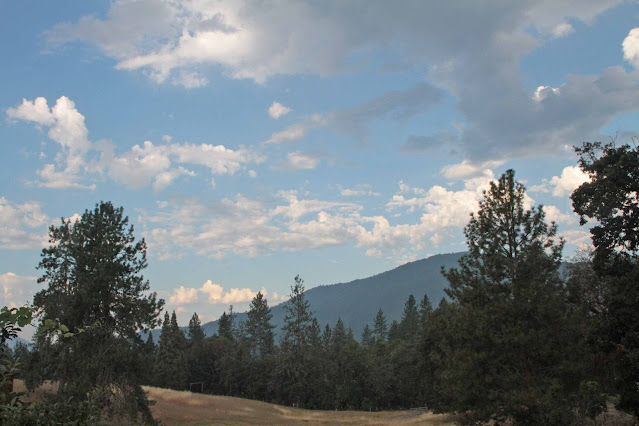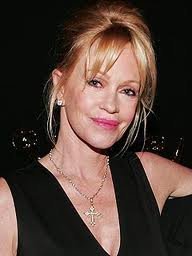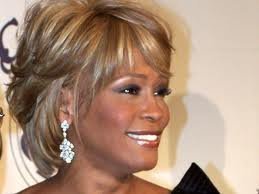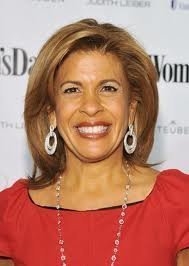A carousel (American English), merry-go-round (British English), or hurdy-gurdy (Australian English, esp. SA) is a type of amusement ride consisting of a rotating circular platform with seats for riders. The "seats" are traditionally in the form of rows of wooden horses or other animals mounted on posts, many of which are moved up and down by gears to simulate galloping, to the accompaniment of looped circus music.
Carousels are commonly populated with horses, each horse weighing roughly 100 lbs, but may include a variety of mounts, for example pigs, zebras, tigers, or mythological creatures such as dragons or unicorns. Sometimes, chair-like or bench-like seats are used, and occasionally mounts can be shaped like aeroplanes or cars.
The names carousel and merry-go-round are also used, in varying dialects, to refer to a distinct piece of playground equipment.
The modern carousel emerged from early jousting traditions in Europe and the Middle East. Knights would gallop in a circle while tossing balls from one to another; an activity that required great skill and horsemanship. This game was introduced to Europe at the time of the Crusades from earlier Byzantine and Arab traditions. The word carousel originated from the Italian Carosella and Spanish Carosella ("little battle", used by crusaders to describe a combat preparation exercise and game played by Turkish and Arabian horsemen in the 12th century). This early device was essentially a cavalry training mechanism; it prepared and strengthened the riders for actual combat as they wielded their swords at the mock enemies.
By the 17th century, the balls had been dispensed with, and instead, the riders had to spear small rings that were hanging from poles overhead and rip them off. Cavalry spectacles that replaced medieval jousting, such as the ring-tilt, were popular in Italy and France. The game began to be played by commoners, and carousels soon sprung up at fairgrounds across Europe. At the Place du Carrousel in Paris, an early make believe carousel was set up with wooden horses for the children.
Another kind of carousel emerged in the 17th century in Belgium and France to celebrate special events. This was a ceremonial parade of knights and noblemen on horseback around a courtyard, accompanied by tournaments and various equestrian demonstrations and games, including the spearing of cardboard heads of "Moors" and "Saracens". The most famous carousel of this kind was held by Louis XIV in June, 1662, in the courtyard of the Tuileries Palace, to celebrate the birth of his son and heir. The site of the event, next to the Louvre, is still known as "the Carrousel".
By the early 18th century carousels were being built and operated at various fairs and gatherings in central Europe and England. Animals and mechanisms would be crafted during the winter months and the family and workers would go touring in their wagon train through the region, operating their large menagerie carousel at various venues. Makers included Heyn in Germany and Bayol in France. These early carousels had no platforms; the animals would hang from chains and fly out from the centrifugal force of the spinning mechanism. They were often powered by animals walking in a circle or people pulling a rope or cranking.
By 1803 John Joseph Merlin had a carousel in his Mechanical Museum in London, where gentry and nobility liked to gather on winter evenings. The horses "floated free over a pole". It was connected to a "big musical instrument that played a fully orchestrated concerto" and from the first note, the carousel would start turning while each horse would make a galloping movement with a visitor riding on its back. Merlin did not patent his inventions and engineers were allowed to come to create their own models of his creations.
Viewed from above, in the United Kingdom, merry-go-rounds, called ‘gallopers’ by the showmen community when populated by model horses, usually turn clockwise (from the outside, animals face to the left), while in North America and Mainland Europe, carousels typically go counterclockwise (animals face to the right).
Modern carousels
By the mid-19th century the platform carousel was developed; the animals and chariots were fixed to a circular floor that would suspend from a centre pole and rotate around. These carousels were called dobbies and were operated manually by the operator or by ponies.
In mid-19th-century England, the carousel became a popular fixture at fairs. The first steam-powered mechanical roundabout, invented by Thomas Bradshaw, appeared at the Aylsham Fair in about 1861. It was described by a Halifax Courier journalist as "a roundabout of huge proportions, driven by a steam engine which whirled around with such impetuousity, that the wonder is the daring riders are not shot off like cannon- ball, and driven half into the middle of next month."
Soon afterwards, English engineer Frederick Savage began to branch out of agricultural machinery production into the construction of fairground machines, swiftly becoming the chief innovator in the field. Savage's fairground machinery was exported all over the world. By 1870, he was manufacturing carousels with Velocipedes (an early type of bicycle) and he soon began experimenting with other possibilities, including a roundabout with boats that would pitch and roll on cranks with a circular motion, a ride he called 'Sea-on-Land'.
Savage applied a similar innovation to the more traditional mount of the horse; he installed gears and offset cranks on the platform carousels, thus giving the animals their well-known up-and-down motion as they traveled around the center pole – the galloping horse. The platform served as a position guide for the bottom of the pole and as a place for people to walk or other stationary animals or chariots to be placed. He called this ride the 'Platform Gallopers'. He also developed the 'platform-slide' which allowed the mounts to swing out concentrically as the carousel built up speed. Fairground organs (band organs) were often present (if not built in) when these machines operated. Eventually electric motors were installed and electric lights added, giving the carousel its classic look.
^Carousel built in 1905 by Gustav Dentzel which is still operational in Rochester New York.
These mechanical innovations came at a crucial time, when increased prosperity meant that more people had time for leisure and spare money to spend on entertainment. It was in this historical context that the modern fairground ride was born, with Savage supplying this new market demand. In his 1902 Catalogue for Roundabouts he claimed to have "... patented and placed upon the market all the principal novelties that have delighted the many thousands of pleasure seekers at home and abroad."
In the United States, the carousel industry was developed by immigrants, notably Gustav Dentzel of Germany and Charles W.F. Dare from England, from the late 19th century. Several centers and styles for the construction of carousels emerged in the United States: Coney Island style – characterized by elaborate, and sometimes faux-jeweled, saddles – with Charles I. D. Looff; Philadelphia style – known for more realistically painted saddles – with Dentzel and the Philadelphia Toboggan Company; and Country Fair style – often with no saddles at all – with Allan Herschell and Edward Spillman of western New York, and Charles W. Parker of Kansas. The golden age of the carousel in America was the early 20th century, with large machines and elaborate animals, chariots, and decorations being built.
^Disneyland carousel
We love rice dishes that are full of veggies, 'cause it helps add color to our table and nutrition to our bodies. This recipe for Easy Italian Rice is simple, flavorful, and beautiful.
- 1 cup long- or whole-grain uncooked rice
- 2 cups chicken broth, divided
- 1 tablespoon butter
- 1/2 cup thinly sliced carrots
- 1/2 cup thinly sliced zucchini
- 1/2 cup thinly sliced yellow squash
- 1/4 cup dry white wine
- 1/4 cup grated Parmesan cheese
- 1/2 teaspoon Italian seasoning
- 1/2 teaspoon salt
- 1/4 teaspoon pepper
- In a large saucepan, combine rice and 1-1/2 cups of chicken broth; bring to a boil, stirring occasionally. Reduce heat to low, cover, and simmer about 15 minutes; set aside.
- In a large skillet over medium-high heat, melt butter; cook the carrots, zucchini, and yellow squash 2 to 3 minutes, or just until softened. Add wine and cook 2 more minutes; set aside and keep warm.
- Over medium-high heat, add remaining broth to rice and stir until broth is absorbed. Stir in cooked vegetables, Parmesan cheese, Italian seasoning, salt, and pepper. Serve immediately.
1964 – Hoda Kotb, American television news anchor
National Book Lovers Day on August 9th harnesses all the excitement bibliophiles feel about books into one celebration.
A day for all those who love to read, National Book Lovers Day encourages you to find your favorite reading place, a good book (whether it be fiction or non-fiction) and read the day away.
Bibliophile – a person who has a great appreciation for or collects books.
Step back in time
- The very first books used parchment or vellum (calf-skin) for the book pages.
- The book covers were made of wood and often covered with leather.
- Clasps or straps kept the books closed.
- Public libraries appeared in the Middle Ages.
- Public libraries often chained the books to a shelf or a desk to prevent theft.
Moving forward
Along with several recent developments, book manufacturers use digital printing. Book pages are printed using toner rather than ink. As a result of digital printing, print-on-demand opens up a whole new realm of publishing. In this case, distributors don’t print the books until the customer places the order.
More and more, people read E-books. E-book (electronic book) refers to a book-length publication in digital form. They are usually available through the internet. However, they can also be found on CD-ROM and other systems. Read an E-book on a computer or via a portable book display device known as an e-book reader, such as a Reader, Nook or Kindle
HOW TO OBSERVE
Sit back, relax and READ! Don’t forget to share the joy of reading with young people in your life. Inspire them with your favorite novel or find out about the last book they took off the shelf. Read to the littlest of the up-and-coming readers, too. And share what you’re reading with us, too! Need more ways to celebrate? We’ve got them!
- Shop for a new title to read or explore the shelves for one you would like to give.
- Explore the shelves of used book stores. You might find an out-of-print tome that might become the highlight of your collection.
- Discover the world of online bookstores. Their stock includes a variety of subjects and collectible items, too.
- Record a video of you reading a story for a child in your life
- Randomly give a book to someone.
- Visit your public library and check out a favorite tome.














